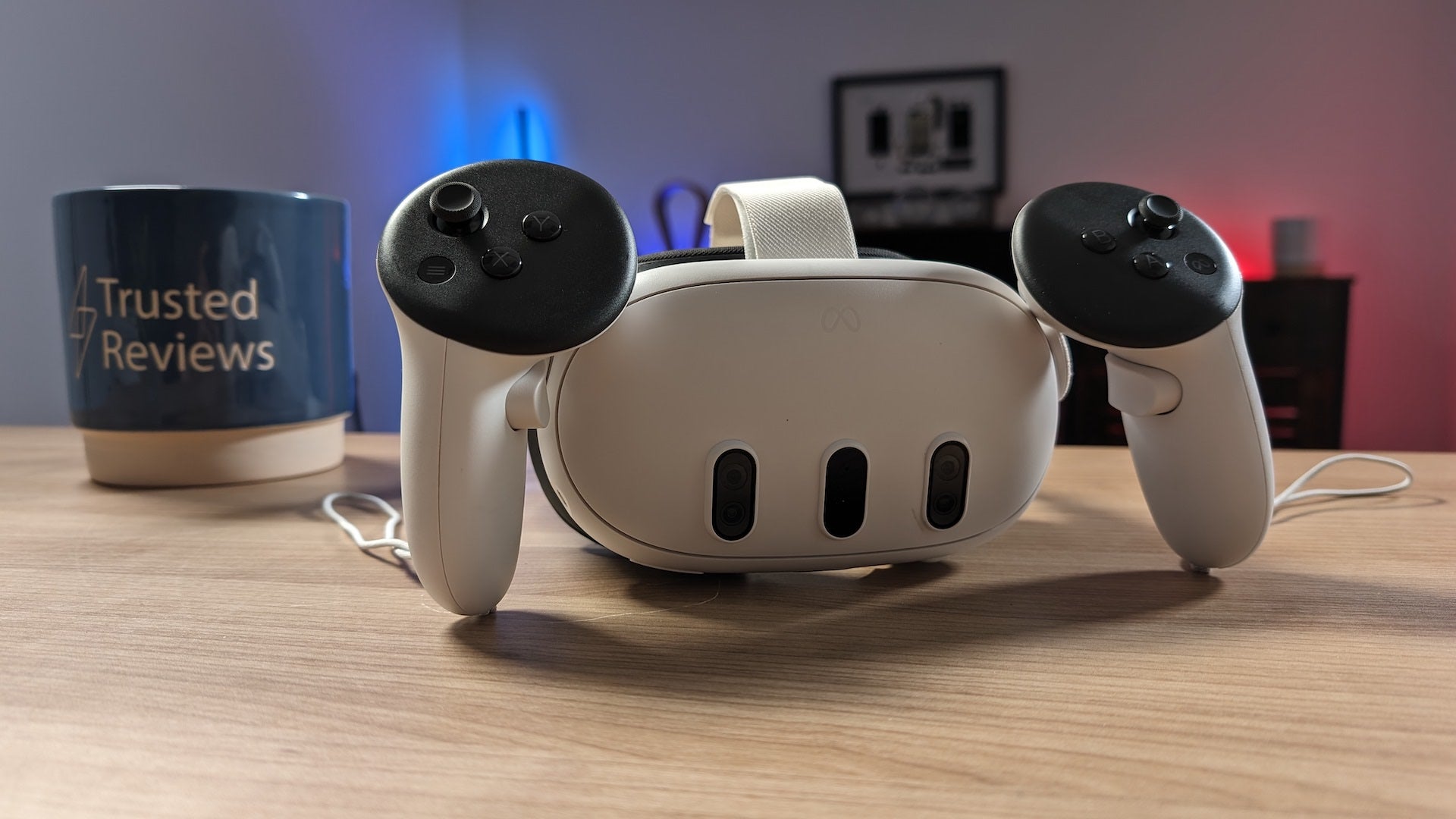Unistellar eQuinox 2 Review
Explore the night sky hassle-free

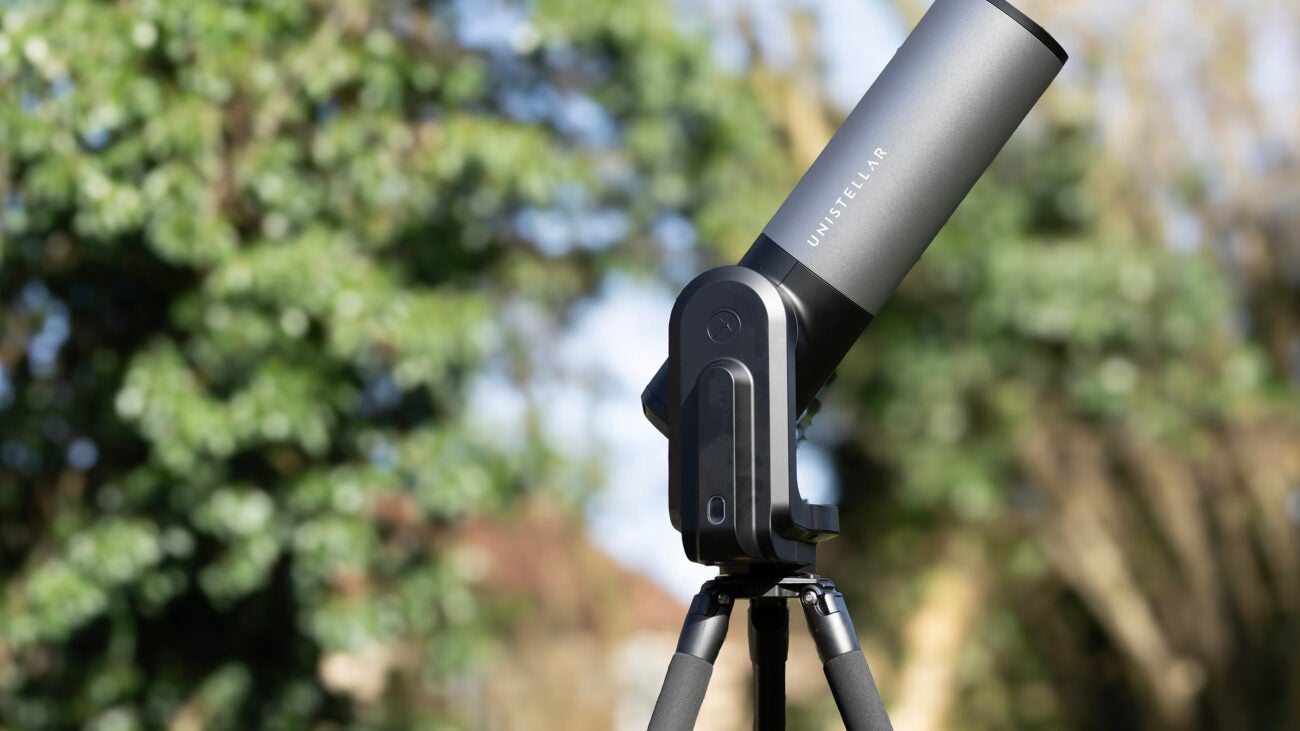
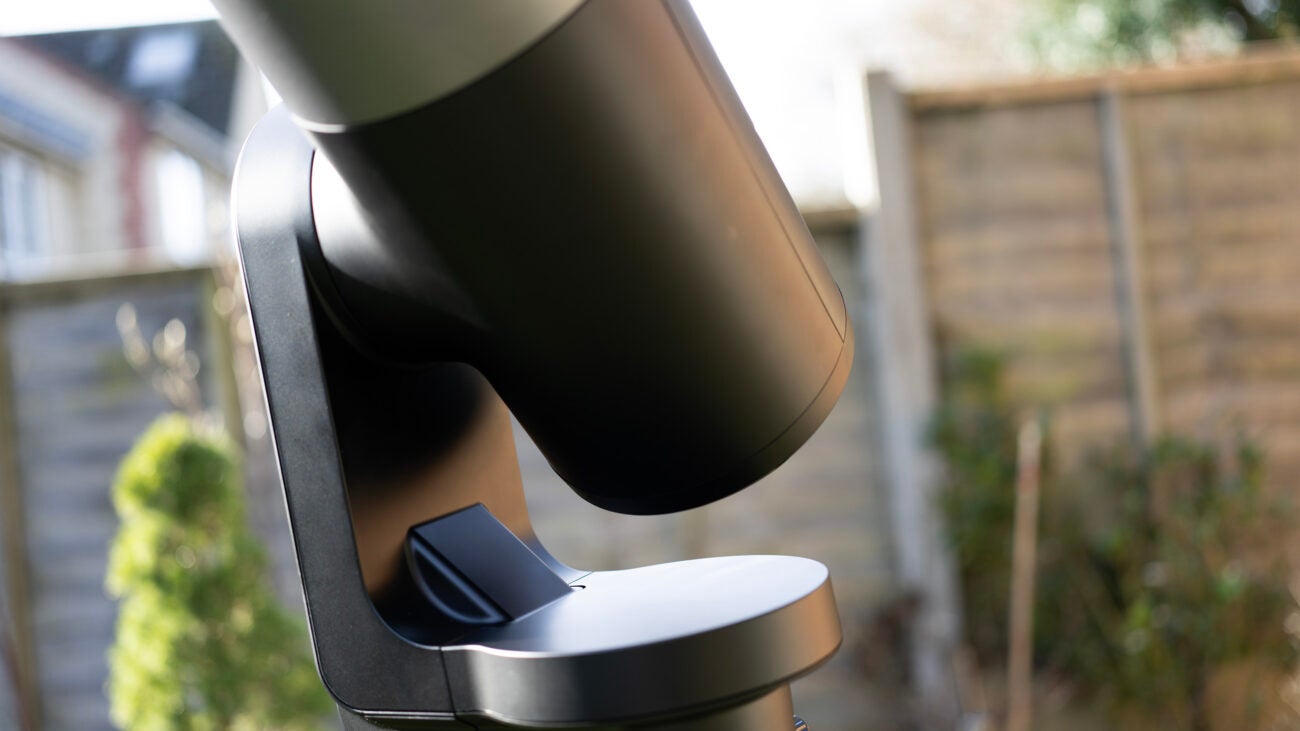


Verdict
The Unistellar eQuinox 2 automated astronomy platform is not something you’re likely to pick up on a whim, but it’s capable of revealing wonderful things in the night sky. It’s overshadowed by other Unistellar scopes, however, and may be overlooked as a result.
Pros
- Complete astrophotography setup
- Wi-Fi app connection
- 6.2MP sensor
Cons
- Expensive, but not top of the range
- Takes time to master
- Can be wobbly
Key Features
- Smart phone controlApp control via a direct Wi-Fi connection lets you guide and control the telescope.
Introduction
Looking very much like its close cousin the Unistellar EvScope 2, but a bit cheaper, this motorised smart telescope houses a 6.2MP camera.
It doesn’t have the eyepiece from the EvScope, but given the choice of peering through the small lens or viewing the results of the scope’s clever automatic image processing on a phone or tablet screen, it’s pretty clear what most people will choose.
Otherwise, this is a very similar proposition to its more expensive pal, yet the differences show. The eQuinox 2 seems slower to set up, its image quality is not as good and its locating and tracking abilities feel less sharp.
That’s not to say it’s not useful – as an introduction to astrophotography, or a way to spread the news about just what’s lurking in the night sky to multiple phone-toting viewers at a star party, this would make a great choice.
Design and features
- Sleek design
- Comes with tripod
- Complete app control
The Unistellar eQuinox 2 looks great. Its metal-and-black tube, with its one-point attachment to its mount and complete lack of any visible controls beyond a single button, gives an impression of technical advancement and smooth operation, even before you’ve got it out of the box.
The tube and mount, with all electronics integrated within, sit on top of a tripod and are secured with two screws. It’s all beautifully put together, and has a serious heft when you pick it up. Extend the tripod legs, make sure the battery is charged, place the eQuinox 2 under clear, dark skies, and you’re all set.
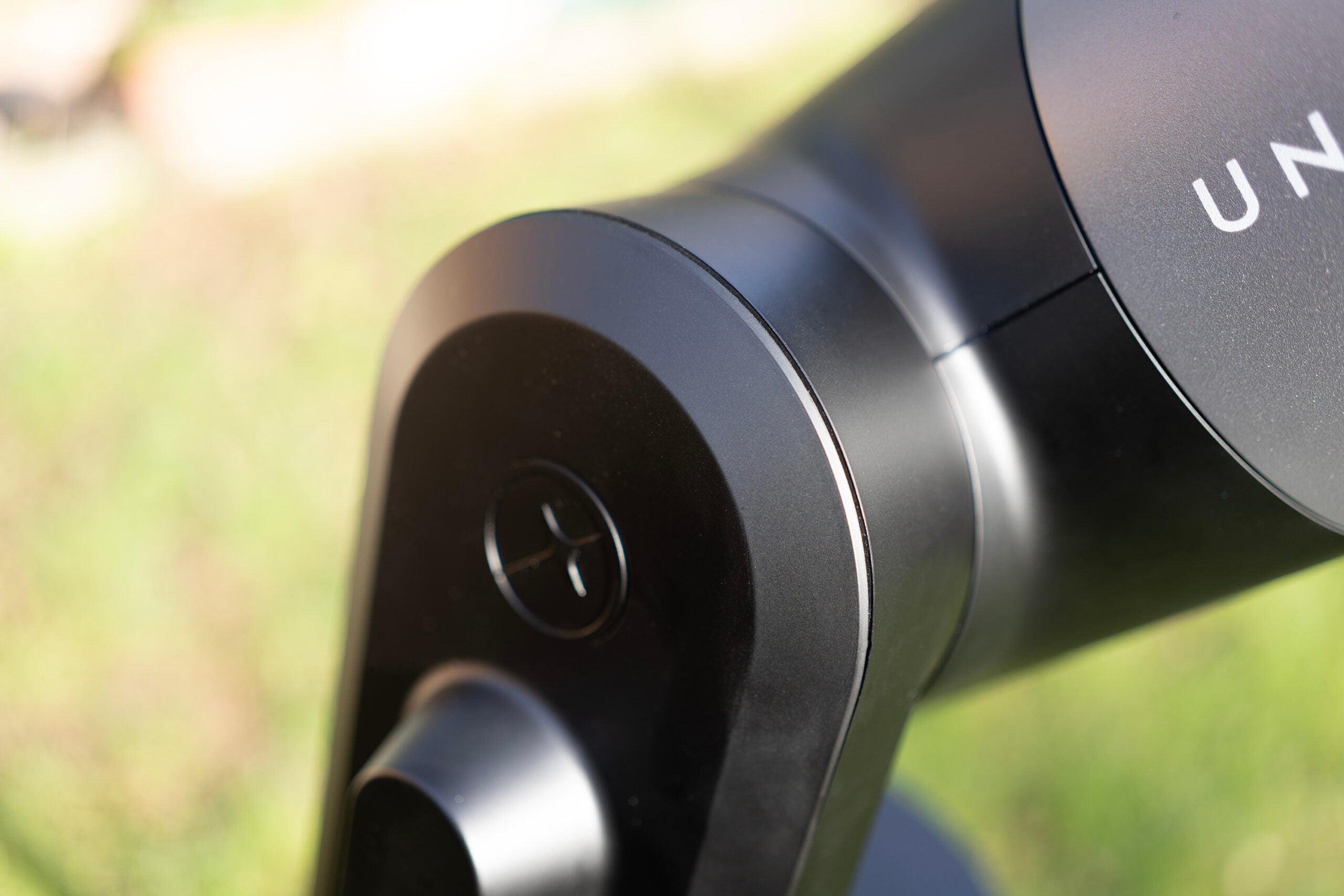
To operate the eQuinox 2 you’ll need a smartphone or tablet, preferably one with GPS built in, though that’s not a dealbreaker as you can input this information manually. Connect to the Wi-Fi hotspot created by the scope, log in using the Unistellar app (you’ll need an ID code printed on the bottom of the scope, and it’s a good idea to take a photo of this before you start), and you’ll be able to take control of the observation platform.
The Nertonian tube has a focal length of 450mm, a focal ratio of f/4, and a field of view comprising 34 x 47 arcminutes. From this, it’s possible to get good views of larger objects such as the Moon, Orion Nebula, Andromeda galaxy and more. Smaller objects such as planets, more distant galaxies and globular clusters can be viewed too, with a simple system much like the Android camera app to switch between zoom levels and get a closer look.
Performance
- Easy to set up
- Broad catalogue of targets
- Lightweight tripod
Setup of the eQuinox 2 is particularly simple. All you need to do is to get it mounted on the tripod, pointed at a sky that’s dark enough to see stars and unbothered by cloud cover, and with your phone or tablet attached to its wireless hotspot. It starts pointing straight up, and if you can see stars through the preview in the app, then you can hit the button to automatically configure the scope so it knows which way to point.
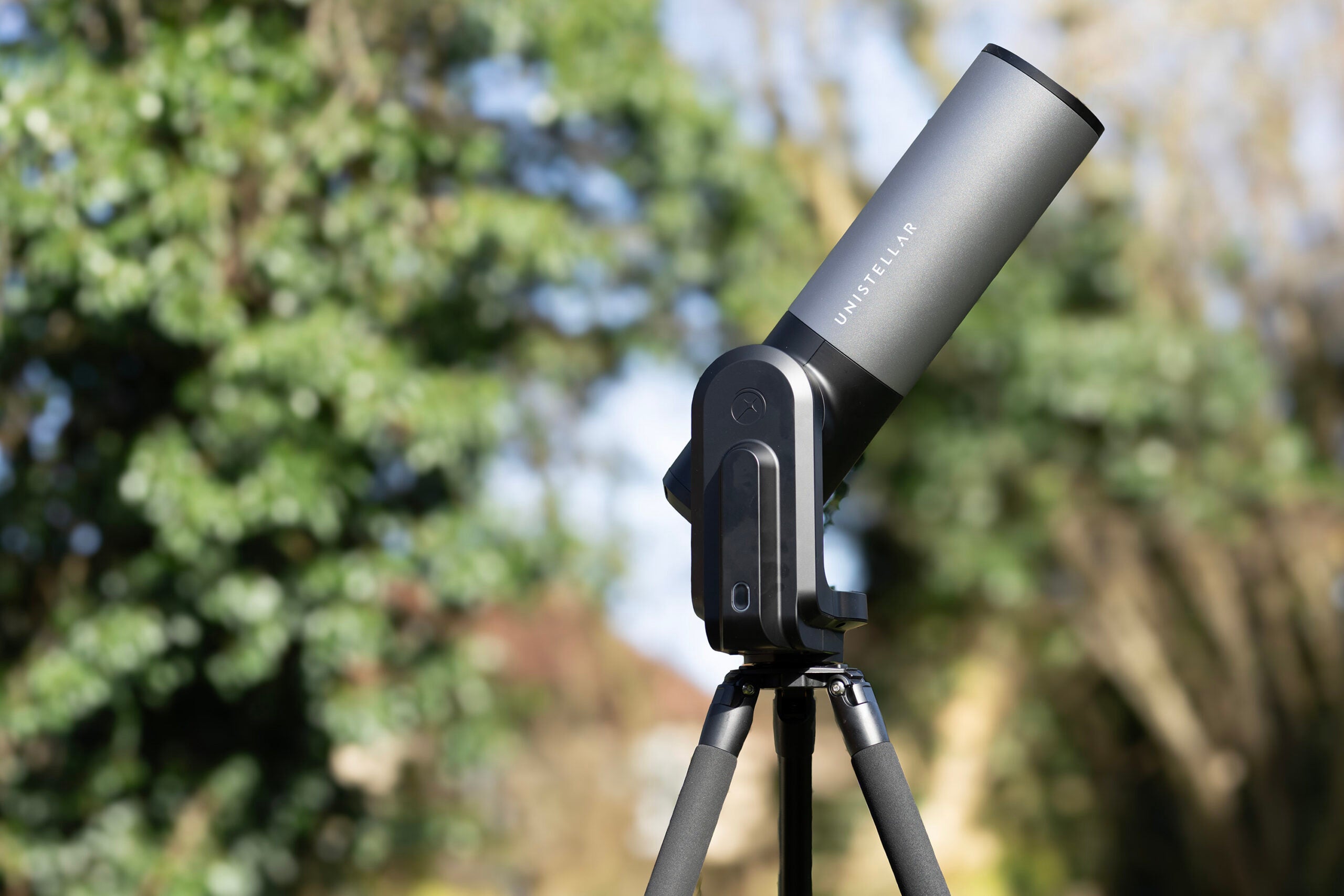
This process seemed to take longer than with the EvScope 2, as did the slewing motion that takes the tube from target to target. It took much longer to find the Moon than the more expensive scope, though once it had got itself worked out it was able to move between targets smoothly, the catalogue in the app making selection easy based on location and time, though not able to take into account overhanging trees or tall buildings blocking the view.
The tripod legs are thin and in three sections, which means the assembly is top-heavy. It sways slightly in the wind, making a calm, clear night essential for observing sessions. The eQuinox 2’s tripod also had a slightly loose clamp that led to one leg collapsing when pushed – not a problem that the identical tripod that came with the Evscope 2 displayed.
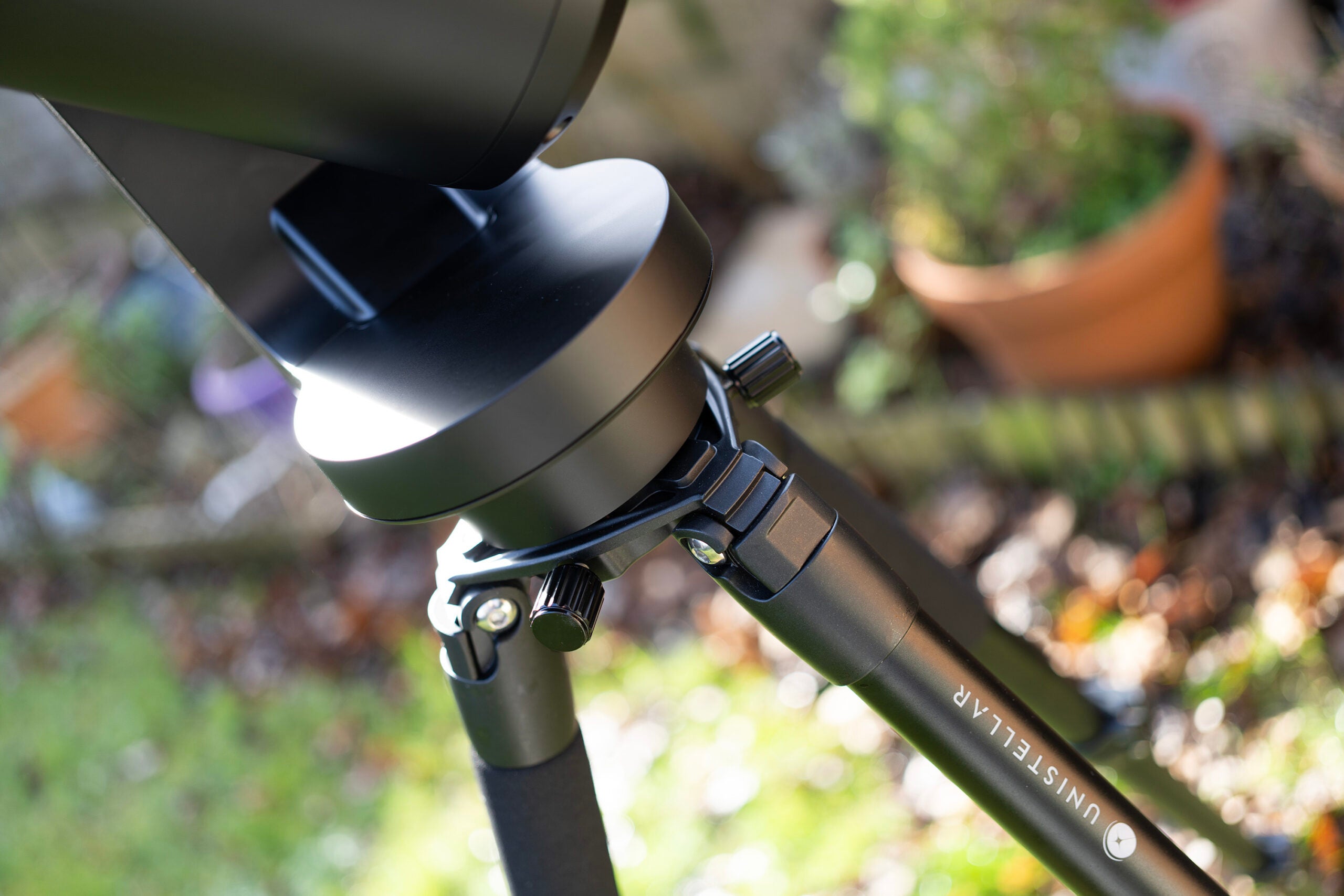
Image quality
- Not as good as Evscope 2
- Still capable of stunning images
- Best for larger targets
The eQuinox 2 uses a 6.2MP image sensor that takes multiple images of its target and stacks them over time, producing a clearer image of dim nebulae and other celestial targets than you’d get from a single exposure. This doesn’t matter so much when looking at naked-eye objects such as the Moon or Jupiter, but for dim galaxies you can leave it to track the target for an hour or more (battery life is rated at 11 hours) to collect all the photons you can and produce a clearer image. There’s an automatic filter to remove light pollution, making it ideal for back-garden astronomy in areas surrounded by street lights, and up to ten watchers can connect their own phones to the scope’s Wi-Fi and view its images too – great for showing off to friends.
In many ways, I ruined the eQuinox 2 for myself by reviewing the Evscope 2 first. If I’d come to it without that prior experience, I would have been blown away by the images the eQuinox produces, but the more expensive Evscope 2 has a better sensor inside, not only with more megapixels but greater light-gathering power, and this shows in the images. The eQuinox’s files were generally dimmer and had less definition than shots of the same target from the Evscope, although atmospheric conditions on the nights spent observing could have affected this. The eQuinox’s files also responded less well to processing – the Orion Nebula showed its colours better from the Evscope, even though the eQuinox’s shots revealed the same structures.
There’s a manual focus wheel at the back of the scope that needs to be used – in combination with a Bahtinov mask – to really home in on the sharpest images and produce point-like stars instead of circles. It would have been nice to see this automated like the rest of the process, and you can find yourself spending a lot of time twisting the wheel, waiting for the app preview image to update, then trying to turn it back the other way without knocking the scope out of position.
You can see a selection of samples below.





Latest deals
Should you buy it?
You want automated images of the night sky
If you’re interested in astronomy or astrophotography, but don’t want to spend long, cold nights standing in the middle of a field.
You want better images
While it’s a capable system, it’s no match for a full (and much more expensive) astrophotography rig, and even other Unistellar products outclass it.
Final Thoughts
There’s no debate that the Unistellar eQuinox 2 is inferior to the Evscope 2. But it’s also not nearly as expensive, and will do the same job. It’s a fine scope if you’re learning about the night sky, want an easy – if not necessarily quick – way to access the wonders of deep-sky objects, the planets, and the surface of the Moon, and don’t mind making a large investment in it.
Compared to other astrophotography setups – a large refractor with a cooled, specialised camera on an equatorial go-to mount, perhaps – it might even be considered cheap. You’re paying for convenience here, and that’s what you get: Unistellar’s smart scopes offer access to wonders we usually can’t see, and for some that will be worth the price of admission.
FAQs
No, this telescope has no manual controls, so you need a phone or tablet to control the telescope via the app.





